Bridging Victoria: Experiencing the Exhibit
by Suzanne KroegerThis playlist documents the making of the exhibit Bridging Victoria: Stories from the Archaeological Past, and how the event unfolded on the day (Nov 25, 2017). These projects were carefully crafted by University of Victoria anthropology students to share three local archaeological sites through one-of-a-kind, hands-on and immersive experiences.

1In 1 playlists
Why were medicine bottles often textured? Camilla Cyr used a simple box to simulate the experience of underlit houses. Blue glass was also often used to communicate ‘danger’. A real lifesaver if you couldn’t read or see what you were taking!
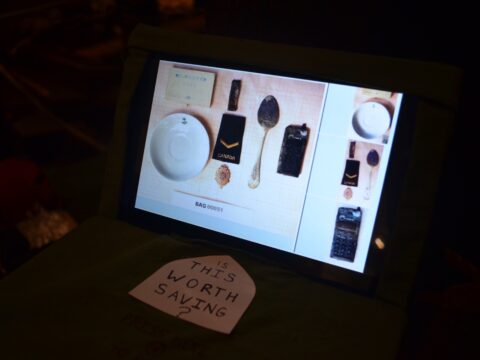
1In 1 playlists
‘Is this worth saving?’ -- Darius Pomeroy challenged us to reconsider the current legislation in BC, which only protects objects and sites dating to before 1846, leaving out important sections of local heritage. The current act can be read here: http://www.bclaws.ca/civix/document/id/complete/statreg/96187_01
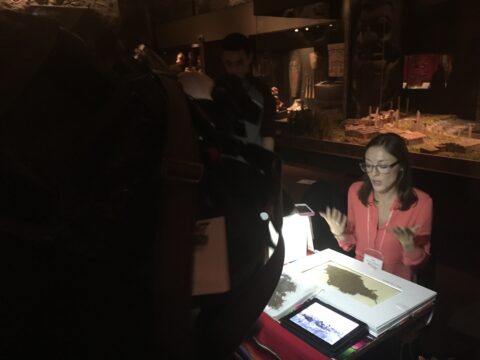
1In 1 playlists
Tessa Gaudet skillfully helped visitors identify characteristics of Coast Salish and northern (likely Haida) basketry, along with oral history and archival photos, to recognize cultural diversity in this region and the ways in which the Songhees village served as a hub for exchange and resistance in the late 19th and early 20th centuries.
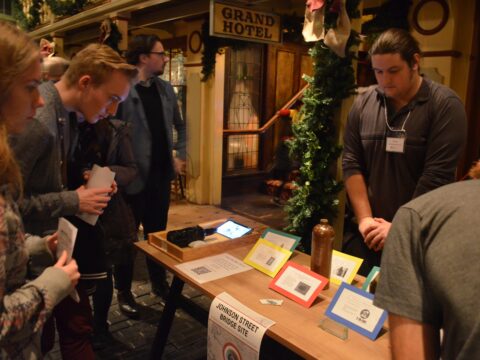
1In 1 playlists
Callum Richards and Scott Steele built interactive maps connection the global exchange networks of early Victoria, based on artifacts excavated locally but made all over the world, from Australia to Germany, and everywhere in between. Scott’s map based on the journey of one bottle can still be found here: https://goo.gl/XSWj6W
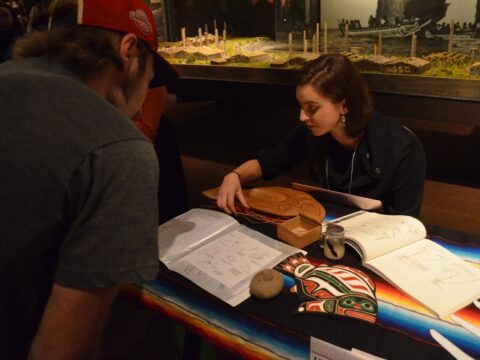
1In 1 playlists
Martina Samson used a combination of art and hands-on tools/materials to discuss halibut fishing and the importance of halibut in northwest coast cultures.Visitors tested their skills in identifying fish species local to this region, in addition to learning how a halibut hook from the RBCM collection was made and used.

1In 1 playlists
The map was also made three-dimensional and interactive through 3D printing. This boat and bottle caps, for instance, represent some of the more recent history in Esquimalt Harbour. The prints were made using open access models on Thingiverse and printed through the UVic Digital Scholarship Commons makerspace.
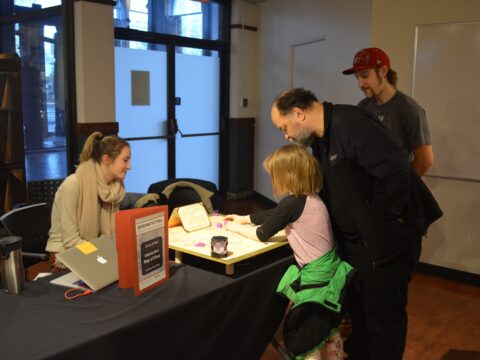
1In 1 playlists
Maddy Chater, Tamara Friedman, Kayla Hartemink, Anna Heckadon, Kaylynne Sparks, and Yip van Muijlwijk created this is interactive map that occupied visitors of all ages in visiting three archaeological sites of Victoria: the Songhees Village, the DND Harbour Dredging, and the Johnson Street Bridge.
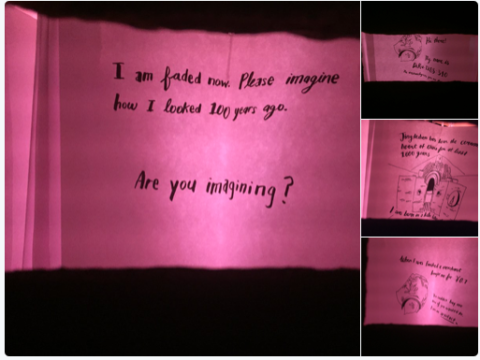
1In 1 playlists
Emily Thiessen created a captivating light box that animated the story of a small rice bowl and it’s +100 year life journey from China to becoming artifact DcRu-1208-340 in the RBCM’s collection. Visitors loved peaking into the box tucked into a corner of Old Town and flipping through the pages of this beautifully illustrated story.
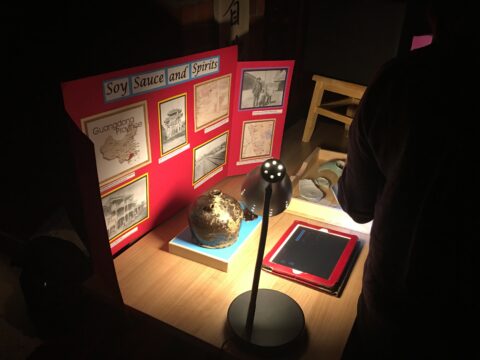
1In 1 playlists
Andrea Lacey’s display connects soy sauce containers recovered from the edge of Victoria’s Chinatown, the oldest Chinatown in Canada, to their place of origin in Guangdong Province. These simple glazed ceramic jugs were often reused after their contents were fully consumed to make and store spirits, etc. as resources were scarce in this period.

1In 1 playlists
The ongoing DND dredging of the Esquimalt Harbour is turning up archaeological collections. Devon Bidal, Jenny Ho Ng, and Marj Parent engage visitors in thinking about the types of objects that are being collected, from cordage made of natural fibers to military objects, representing hundreds of years of human use of the harbour.

1In 1 playlists
Hallie Rounthwaite developed an interactive activity to connect visitors’ modern experiences of food with a Coast Salish wooden spoon excavated from the old Songhees village. Visitors were invited to add their food memories to paper spoons and then categorize them (either cooking/eating or producing/harvesting).

1In 1 playlists
Alexa Dagan, Luisa Esteban and Elisa O’Malley developed cutting-edge augmented reality experiences (using Aurasma app) to demonstrate how these three landscapes have changed over time, using archival and contemporary photos. Augmented reality layers the physical world with digital media to add information and interactivity.
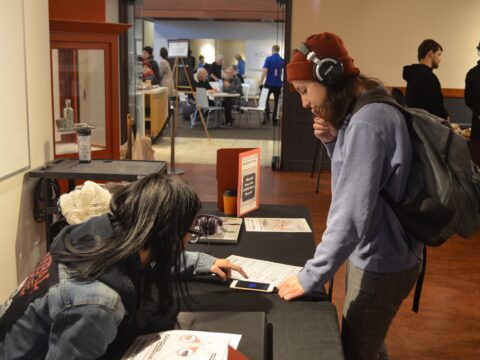
1In 1 playlists
Amanda Fletcher, Katie McPherson and Vincent Ran developed innovative narrative-based soundscapes to capture three landscapes over time, including Esquimalt harbour, Old Chinatown and the old Songhees village. The soundscapes are still available online for free: https://soundcloud.com/user-842052864-784784360
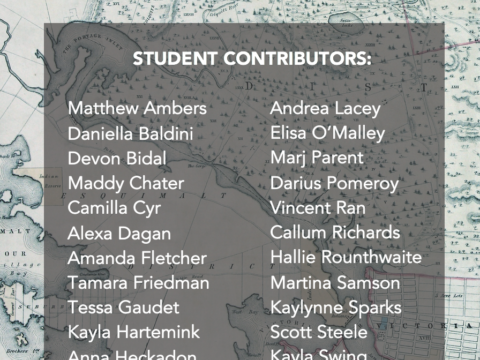
2In 2 playlists
